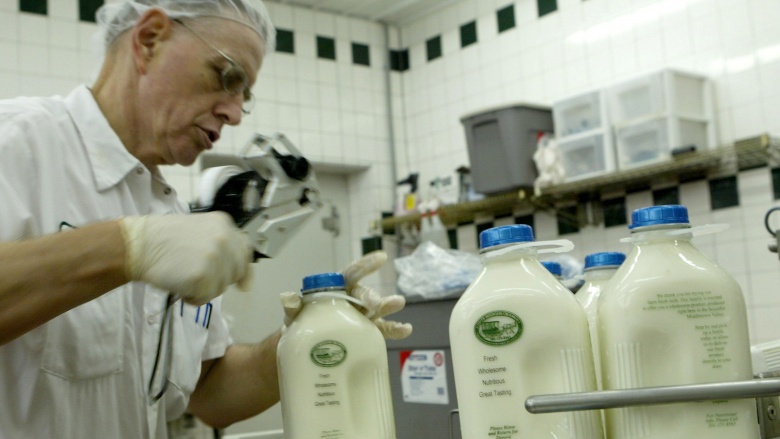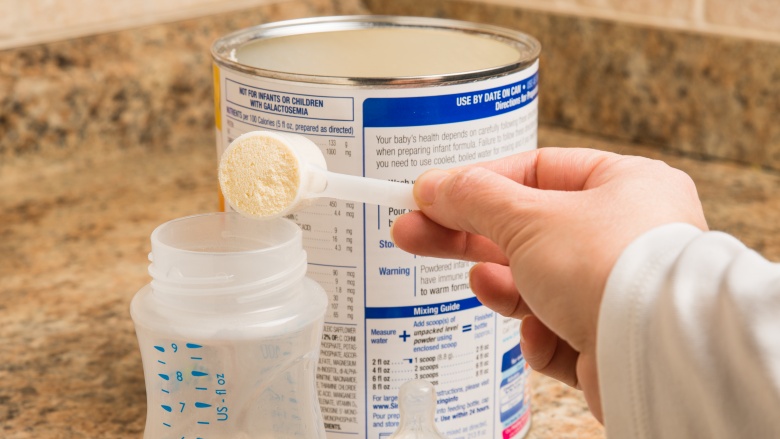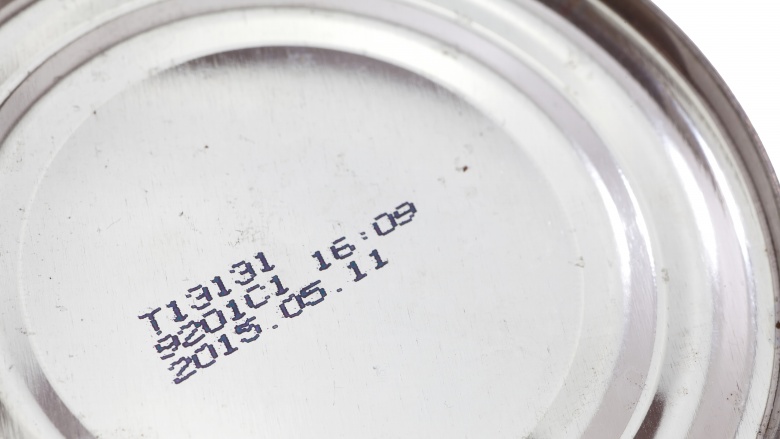Everything You Thought About Expiration Dates Is Wrong
intro
How many times have you checked the expiration date on something, checked the calendar, and then chucked a half-full container in the garbage? Did you even know if it was bad? This is a problem on a massive scale, and it's so big it's almost unfathomable. Every year, America throws away around 60 million tons of food. That's around $160 billion worth.
That's insanity. Look at it on a global scale, and about one-third of all food produced goes in the trash. What takes up the most room in landfills? Food. While part of the problem is a first-world demand for only the most attractive-looking and perfect foods, another part of the problem is expiration dates, and the confusion that they cause. So, let's clear up some misconceptions, save you some cash, and help you figure out what these dates really mean and when you should listen to them.
It can all vary by state
You might think that something as serious as food safety has a whole lot of legislation governing it, but you're already wrong and we're just getting started! In the U.S., there are no federal laws that specify what expiration dates actually mean and how long food is actually good for. Since there hasn't been any movement for a national standard, that's left a number of organizations scrambling to fill in the blanks. State and local health departments have been left to their own devices to come up with labeling guidelines, while industry leaders, trade organizations, and manufacturers are all trying to offer advice and guidance as to what date codes should mean.
While there are some general similarities, there's also a lot of miscommunication and confusion. All that gets even more confusing when state authorities step in to try to fill the void in their own jurisdictions. The labeling guidelines they set might contradict other states' laws, for example. There are even nine states (Utah, Idaho, South Dakota, Nebraska, Alabama, Tennessee, Missouri, Illinois, and New York) that don't require expiration dates be stamped on anything. Other states, like Minnesota, require "Quality Assurance" dates as well as sell-by dates on perishable foods, and still others, like Maryland, require sell-by dates on milk and nothing else. There are also tons of city laws. In Baltimore, it's not legal to sell food past its expiration date. But it is legal in Maryland, and that makes the whole system incredibly complicated, especially when you find out that individual retailers like big box stores and grocery stores can then also add their own dates.
So any time you cross a state line, go into another city, or stop by a local store to pick up a gallon of milk, the date on it might mean something entirely different from what it means at home. You wouldn't know.
Sell-by dates
Although rules and regulations differ from state to state, some general info will help you make sense of all the different types of expiration dates.
If the date says it's a sell-by date, it doesn't really have anything to do with you. According to the U.S. Department of Agriculture, a sell-by date is more for the stores instead of the consumer. It simply tells stores how long they can keep it on their shelves for, and it actually has nothing to do with freshness. If you were to purchase, say, a package of chicken on its sell-by date, you don't need to run home and use it immediately. You would be perfectly safe leaving it in the refrigerator for a couple days or freezing it for up to nine months. Still suspect that it means something for you? The USDA also says that food with a sell-by date can be treated exactly the same as food with no date whatsoever, and some states don't even require sell-by dates on foods that we tend to think of as perilously time-sensitive, like eggs. To see how arbitrary this can be, all you need to do is look at Montana.
Montana's laws for the sale of milk are pretty crazy, and the end result is that a huge amount of good milk is wasted. The state's laws say that all milk needs to be labeled with a sell-by date that's 12 days after the milk was pasteurized. Sounds reasonable, until you consider that the pasteurization process creates a product with an actual shelf life of 21 days. Does this lead to a lot of wasted product and losses for local retailers and producers? You bet it does. It's nuts, especially when you consider California lets milk processors decide how long their product lasts, and Texas doesn't have any guidelines at all.
Best-by dates
This is a pretty common one, and you'd probably like to think that it's backed up by science of some sort. We're familiar enough with the different states of quality that our food goes through by now; you'd hope that the use-by date would actually mean something. It really doesn't. It has absolutely nothing to do with when you should buy something by, when you should freeze it, or even when you should chuck it in the garbage.
The only thing this really indicates is an opinion on when the food is at its peak flavor, taste, or quality. It's pretty subjective, to say the least. After a use-by date, some foods might undergo something like a texture change that's not what the manufacturer wanted, but it isn't dangerous to eat or begging for the garbage. Have some yogurt in the fridge that's a few days past the use-by date? It's probably fine.
Use-by dates
So if sell-by dates are for the stores and best-by dates are for peak quality, what about use-by dates? In many places, it's similar to the idea of a best-by date, and the USDA defines it as the last day to use something while it's still at its peak quality. But that doesn't mean it's dangerous or that it'll make you sick if you use it after that date. This is where a lot of confusion happens, and many people think that use-by dates have some science behind them, too. But they don't, and the shelf life of a product isn't determined by any overseeing body. It's the responsibility of the manufacturer to put these dates on their products, and the USDA stresses that these dates have nothing to do with safety. As long as food is handled and stored properly, it can be good for days after its use-by date.
Dates on baby formula
All that being said, there are some notable exceptions to the rules of there being no real, concrete federal guidelines, and just when you think you've got a handle on this? There's always a little something more.
After all that, there's one product the FDA does regulate: infant formula. The expiration dates on this particular product are hard and fast rules. While your adult body won't mind too much if you snack on some cookies that expired last week, infant and baby bodies are different and formula contains very specific nutritional content for a reason. Here, expiration dates mean the same sort of thing (they're a guarantee of when the contents are going to contain everything on the label in those exact quantities), but they need to be more strictly followed because of the job they need to do. There are also texture considerations. Infant formula is fed through a bottle, and any change in texture or consistency can make it hard for the baby to get it out of the bottle. Please don't use baby formula past its use-by date.
Closed date codes
Go ahead and take a look at the series of numbers on a box of cereal or pasta sitting in your cupboard. They'll be on most cans, too, sometimes alongside a more traditional date form. (Basically, they're found on things that are considered non-perishable.) You've probably noticed them before, and some might even include a date or at least something that looks like it might be a month and a year. Have you ever found anything in the back of your cupboard that has a number that looks suspiciously like an expired expiration date? Well, calm down. They're called closed date codes, and they aren't expiration dates.
Generally, these codes don't refer to the end of a product's life, but the beginning of it. They're coded into batches that allow manufacturers to keep track of when something was first packaged, and since it's only for the use of the manufacturer, there's no set scheme for figuring out what they mean. Typically, one number might be used to refer to the year, but some codes can get pretty elaborate. Letters can refer to a particular month, and some digits in the code might even be throw-away filler numbers (or letters) that don't actually mean anything at all. Some places use a Julian calendar, so, for example, 017 actually means January 17. Fortunately, you don't need to know what these codes mean, and you can sleep well at night knowing now that they don't have anything to do with expiration dates at all.
What about dates on medicines?
Even if you're willing to crack open some almond milk that's a few days past its expiration date, you might be a little unsure about what's in your medicine cabinet.
Take that bottle of Tylenol. There's a date on it, but it doesn't mean there's anything wrong or dangerous about it beyond that date. It's there because of a 1979 law that said all medicine needed to be dated, but it has nothing to do with danger or spoilage. It simply means that it's the last date that the pill is guaranteed to be working at full strength. Pop a few outdated Tylenol for that headache, and probably the worst thing that can happen is that it might not completely relieve your headache. (So pretty much like a normal pill.)
The Food and Drug Administration proved that was the case in 2006. When the Department of Defense was looking at a massive stockpile of outdated medicines, they asked the FDA to do a study on how long these (mostly over-the-counter) medications really lasted. They took 122 different medicines in more than 3,000 individual groups, and found that 88 percent of them were good well beyond their expiration dates. Some were good for at least another five years. According to Harvard Medical School, most non-liquid medications are good well past their expiration date, and keeping them in a cool place (like the refrigerator) rather than your bathroom medicine cabinet will also help prolong their potency.
If you can't trust expiration dates, who can you trust?
It's no secret that a lot of us rely on expiration dates to give us a hint as to when we need to throw things out. The idea that these dates provide something of a safety net so we can get the most out of our food is reassuring. Unfortunately, that's a bit of a pipe dream and leads to a ton of food waste. So if you can't go by the dates printed on packages, what can you go by?
The U.S. Department of Health & Human Services runs FoodSafety.gov, and they have some incredibly useful information relating to just how long you can safely keep all kinds of food for. You can find the full list of their charts here, including specific charts on eggs and ham, along with more general guidelines for other types of food. (They even have charts to help you figure out what you can keep and what you need to throw away after power outages.) The FDA also has this handy PDF that's formatted to be easily printed out, and it gives all the basic details on how long to keep fresh and cooked meats, fish, shellfish, deli meats, and eggs. So go forth and help reduce food waste by eating perfectly acceptable food!








